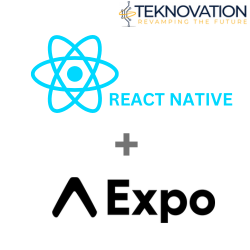Best Guide to React Native and Expo: Supercharging Mobile App Development
Introduction:
In the ever-changing realm of mobile application development, React Native and Expo have emerged as formidable resources for crafting applications that work seamlessly across various platforms. It is essential for developers to grasp the extent of their abilities, advantages, and recommended techniques in order to fully leverage their capabilities.

Comprehending React Native and Expo:
What exactly is React Native?
React Native is an unrestricted structure crafted by Facebook that enables programmers to construct portable applications utilizing JavaScript and Respond. It facilitates the formation of natural-seeming encounters across iOS and Android platforms while preserving code recyclability.
Unveiling Expo
Expo is a group of utensils and services erected around React Native, furnishing programmers with a simplified system for constructing, deploying, and administering portable applications. It provides characteristics like simplified development environment configuration, entrance to natural APIs, and over-the-air upgrades.
Advantages of utilizing React Native and Expo:
Smooth Cross-Platform Creation
React Native and Expo streamline the creation of multi-platform mobile applications, enabling developers to author code just once and distribute it across various platforms. This markedly diminishes development time and expenses while guaranteeing uniformity in user interaction.
Speedy Revision and Creation Cycle
Thanks to hot reloading and instantaneous updates delivered by Expo, developers are able to witness modifications in real-time while coding, promoting quicker iteration and a more effective development cycle. This swift feedback loop hastens the application development process and enhances productivity.
Beginning your journey with React Native and Expo:
Setting Up Your Development Area
To kick off your journey with React Native and Expo, set up Node.js and the Expo CLI. This can be achieved using either npm or yarn. The Expo CLI streamlines the setup of projects and offers resources for managing dependencies, operating the development server, and constructing apps for dissemination.
Development Kickoff
Employ the Expo CLI to construct a fresh project, which produces a fundamental framework with all the essentials necessary to commence. Following this, you can execute the project locally on your gadget or within a simulator/emulator to witness its functionality.
Building an app for mobile with React Native and Expo:
Crafting the User Interface
Begin by crafting the user interface of your application utilizing React Native’s component-driven structure. Utilize pre-built elements like Screen, Information, and Tapeable to produce an aesthetically pleasing and engaging interface.
Integrating Features with JS
Incorporate features into your app using JavaScript, making use of React Native’s interfaces and external libraries. You can utilize device abilities such as camera, GPS location, and notifications, also linking with backend services through REST APIs or GraphQL.
High-level feature & functionalities with React Native and Expo:
Embedding Inherent Modules Content
Expand the capacities of your application by embedding inherent modules inscribed in Java (for Android) or Objective-C/Swift (for iOS). Expo’s workflow streamlines the procedure of incorporating custom inherent functionality while still upholding the advantages of cross-platform development.
Investigating Expo Managed Workflow
Plunge further into Expo’s managed workflow, which provides added characteristics such as over-the-air upgrades, push notifications, and verification services right out of the box. This methodology simplifies application expansion and management, especially for smaller teams and solo developers.
Troubleshooting common issues in React Native and Expo:
Debugging and Error Handling
Discover methods for diagnosing common problems and managing errors in Respond Native and Showcase projects. Utilize tools like Reactotron for diagnosis, scrutinize stack traces for mistakes, and utilize community resources like forums and Stack Overflow for support.
Handling Platform-Specific Obstacles
Comprehend and manage platform-specific obstacles that might occur during the creation of cross-platform applications. Acquaint yourself with platform distinctions, exceptional circumstances, and compatibility problems, and employ platform-specific code when needed to attain desired functionality.
Resources for learning React Native and Expo:
Authorized Documentation and Tutorials:
Discover the authorized documentation and tutorials offered by React Native and Expo to delve deeper into their characteristics, interfaces, and progress methods. These materials provide thorough instructions, code examples, and practical tasks to assist you in initiating and mastering the technologies.
Society Forums and Internet Communities:
Connect with the dynamic society of React Native and Expo creators via forums, chat boards, and virtual communities. Join in conversations, inquire about doubts, and exchange your expertise and encounters with other creators to encourage learning and teamwork.
Conclusion
React Native and Expo enable developers to build top-notch mobile applications effortlessly, efficiently, and adaptably. By grasping their basics, utilizing their functionalities, and adhering to best practices, developers can unleash the complete potential of these technologies and provide influential mobile encounters.

